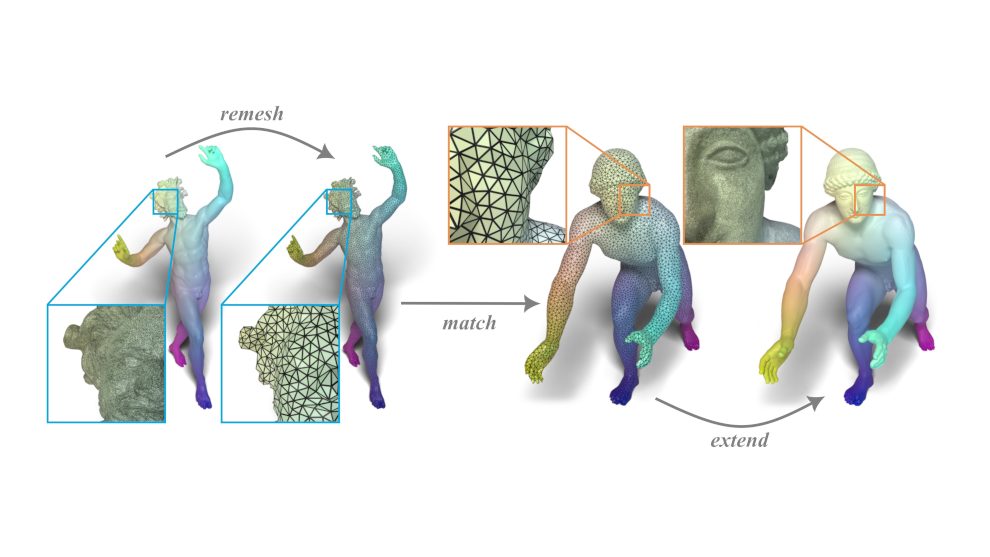About
I currently am a Tenured Assistant Professor at Pegaso University, in the Department of Information Science and Technology. Previously, I was an Adjunct Professor at Pegaso University, and a Postdoctoral Researcher at the University of Milano-Bicocca, under the supervision of Prof. Simone Melzi. I have also been a Postdoctoral Researcher in the GLADIA group at Sapienza – University of Rome, under the supervision of Prof. Emanuele Rodolà, and a Research Intern in the Computational Sciences group at the King Abdullah University of Science and Technology, under the supervision of Prof. Dominik L. Michels.
I have obtained my M.Sc. degree in Computer Science in 2019 at Sapienza – University of Rome, where I also defended my Ph.D. thesis on “Scalable Geometry Processing for Computer Graphics Applications” in 2023.
My research activity is in the fields of Computer Graphics and Computer Vision, with a particular focus on Geometry Processing, Computational Geometry, Shape Analysis, and Spectral Geometry. I also have other research interests, spanning the fields of Physical Simulations and Parallel Computing.
Just two lines about me as a person
Strategy and tactics are probably two keywords spanning across most of my interests. I am a videogame enthusiast, especially about RTS games (my favorites being Starcraft II and Medieval II: Total War). I am passionate about tabletop games, and I regularly play chess, Magic: the Gathering, and Warhammer (I am not very good at any of them). The last one suggests that I love miniature painting, which I do (I am just not good at that either).
I also realy am into history, fantasy, and science fiction, and I love books (yep, possibly paper books), especially those about these topics.
The work I am most proud of (until now)

ReMatching: Low-Resolution Representations for Scalable Shape Correspondence
European Conference on Computer Vision (ECCV) 2024
F. Maggioli, D. Baieri, S. Melzi, E. Rodolà
This is the work that is currently driving my research activities. Working on this paper really got me into a rabbit-hole of Riemannian geometry and the weird properties of non-Euclidean metric spaces. With this work, I understood that geometry processing can be completely rethought in a multi-resolution fashion to ensure efficiency without losing accuracy.
The results of months and months of working on this paper gave me some crucial insights on how the classical definitions of manifolds via charts and atlases is still exploitable and that there is much we can draw from it, if we understand what to look at.
